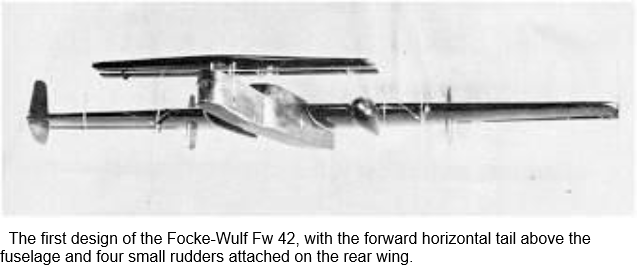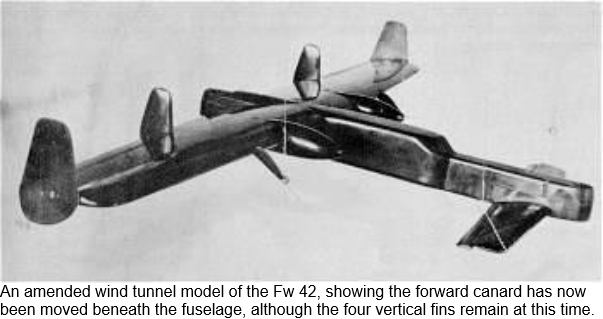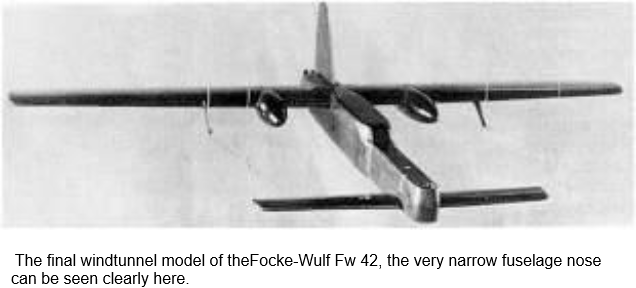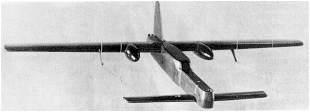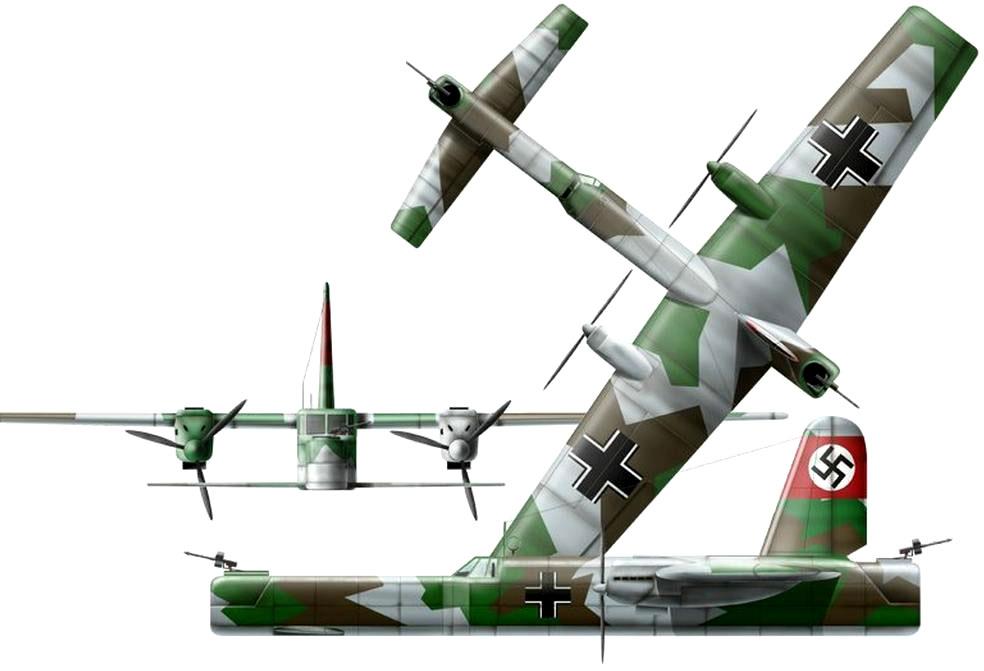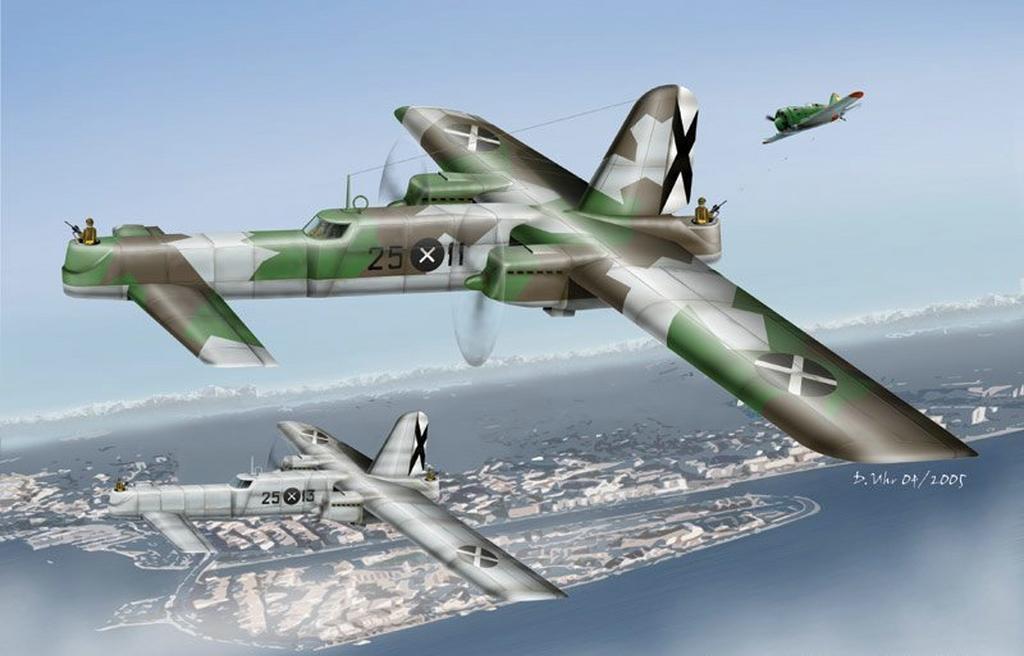The Focke-Wulf Fw 42 was a design for a twin-engined medium bomber, of canard configuration, that was designed by Focke-Wulf Flugzeugbau AG in Germany in the early 1930s. Several air forces expressed interest in the aircraft. However, despite its advanced design being proven sound in wind tunnel testing, the Fw 42 failed to win a contract for development, and no examples of the type were ever built.
Designed by Heinrich Focke in response to a 1929 specification issued by the Air Department of the Reichswehr,[1] the design of the Fw 42 was based on that of Focke's earlier F 19 Ente (German: "Duck") light transport.
The aircraft's design featured a long, slender fuselage with gun positions at each end, an aft-mounted wing with a "tail-first", or canard, configuration, fully retractable tricycle landing gear, and an internal bomb bay. The aircraft was planned to be operated by a crew of six.
Early versions of the Fw 42 design featured vertical stabilisers mounted on the end of the wing, with additional fins located just outboard of the engine nacelles, for a four-tail arrangement. In addition, these early concepts featured the canard being mounted above the fuselage in a parasol arrangement, which had been used on the F 19. As the design was developed between 1931 and 1933, the canard was moved from the top to the bottom of the fuselage, to improve vision for the pilot and field of fire for the forward gunner. In addition, wind tunnel tests of the four-fin configuration showed that it did not provide a significant advantage over a single, large fin, and so the latter configuration was adopted for simplicity.
The Fw 42 was intended to be powered by two 560-kilowatt (750 hp) BMW VI 12-cylinder, liquid-cooled engines, which were expected to provide a top speed of nearly 300 kilometres per hour and a range of over 1,200 kilometres
A full-scale mockup, including working gun turrets, of the Fw 42's final design was constructed. Focke-Wulf promoted the design for export sales as well as Luftwaffe service, with the Russians and Japanese reported as expressing interest in the type, and one or both nations' representatives examining the mockup. However, despite the fact that wind tunnel tests of the design's unconventional configuration provided promising results, indicating that the concept was sound, no contracts for development were ever issued, and the Fw 42 project was abandoned.
At the end of World War II, technical information on the Fw 42 was lost in the destruction of sensitive data by Focke-Wulf. However, in 1969, excavation of the site on which the data had been stored revealed that the folders containing information on the aircraft had survived nearly completely undamaged.
| Type |
6-seat medium bomber |
| Engine |
2 BMW VI with 4-bladed, 3.8 m diameter |
| Dimensions |
Length 17,7 m, height 4,3 m , span 25 m , wing area 108 m2 , |
| Weights |
Empty 5600 kg, loaded , max. take off weight 9000 kg |
| Performance |
Max.. speed 310 km/h, cruising speed 260 km/h , range 1200 km, endurance , service ceiling 6000 m , climb |
| Armament |
Two machine guns in nose and tail positions Bombs: 1,000 kilograms in internal bay |
